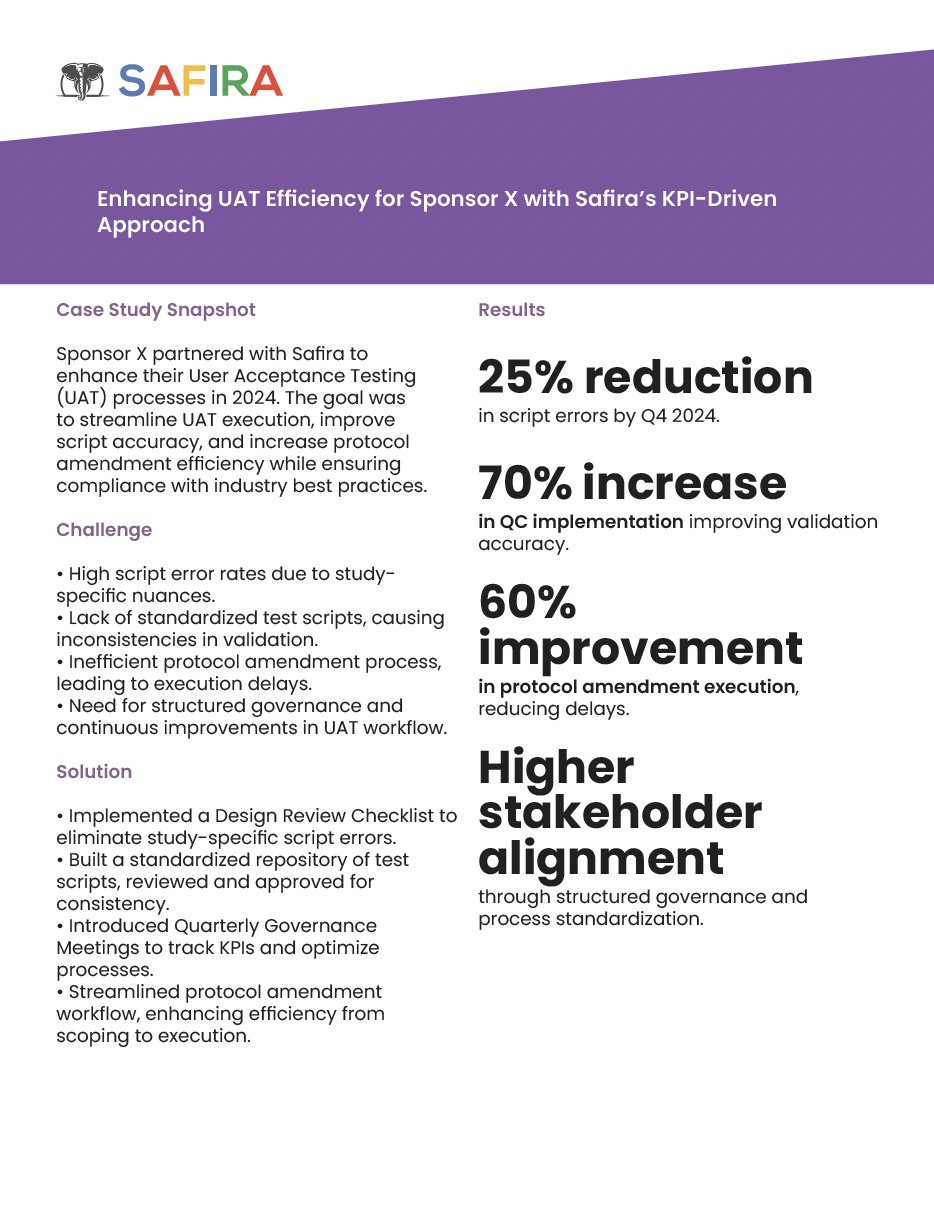UAT: User Acceptance Testing
User Acceptance Testing
Make sure your configuration meets the needs of your protocol and requirements with Safira’s User Acceptance Testing as a Service (UATaaS).
It is important that Sponsors provide evidence of their oversight during the implementation process.
And like the fox should not guard the henhouse or you should not mark your own homework, vendors should not conduct or provide scripts for UAT.

Ensure Protocol Compliance with Safira’s UATaaS
Make certain that your technology configuration aligns closely with your clinical trial protocol and requirements through Safira’s User Acceptance Testing as a Service (UATaaS).
User Acceptance Testing (UAT) is a crucial component of clinical research technology deployment, focusing on verifying that the software fulfills the Sponsor’s operational needs and functions as expected.
This a sponsor responsbility, not a vendor responsibility.
Independent Testing to Guarantee Clinical Success
User Acceptance Testing is an obligation of the Sponsor and must be performed independently from the technology provider to avoid conflicts of interest. This step is critical to the successful execution of a clinical trial, helping to prevent costly errors and delays. Typically, UAT is carried out at the final stages of the development cycle after the software or technology solution has been fully configured, tested and validated.

Collaborative Efforts in Testing
UAT requires a collaborative approach between the technology developers and the Sponsor. Safira’s team of experienced specialists supports the entire UAT process from start to finish, ensuring thorough documentation is in place for future audits and inspections. This collaboration helps ensure that every aspect of the technology is tested and verified against the clinical trial’s unique requirements.
Objective and Comprehensive Testing Scenarios
The primary goal of UAT is to confirm that the technology is entirely suitable for its intended use within the clinical research environment, beyond mere software validation which should be handled by the technology provider beforehand.
Sponsor UAT includes testing the technology against predefined test cases that mimic real-world scenarios, with a test plan that outlines necessary scenarios and detailed test cases covering all technology facets. This process is crucial for identifying any defects or issues that may have been overlooked during the earlier development and validation phases.
Like the popular first edition published in 2018, this book concisely covers the entire landscape of ePRO science and implementation, and provides a practical handbook for all ePRO practitioners.
In addition to making the case for ePRO assessment, the authors take the readers on a tour of issues related to design, validation, and implementation of ePRO solutions. The authors have provided recommendations (“Should skipping of items allowed?”), mitigation strategies (“How can we minimize issues that may arise during user acceptance testing?”) and common pitfalls, such as issues that may arise when administering these assessments to patients from a variety of cultures. The book contains an up-to-date bibliography of industry works, guidances, and best practices making this book a valuable daily guide for anyone involved in the implementation of ePRO in clinical trials.
This second edition, includes important updates based on new regulatory guidance, emerging key works including new ISPOR task force reports, and feedback from the authors’ popular eCOA masterclass workshops.
All royalties from this book will again be donated to two charities: StoneBridge City Farm, Nottingham, UK supporting adults with learning difficulties, and UNICEF´s Emergency Ukraine Appeal.
Benefits
Ready to start your project now?




